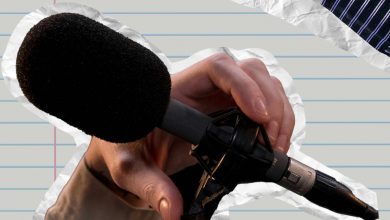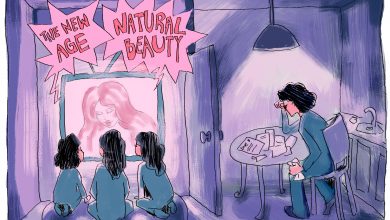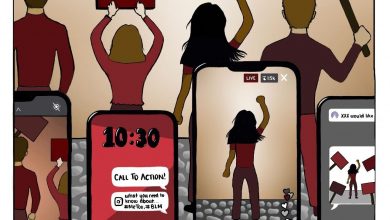Feminism 101: What is the Prison Industrial Complex?

Design by Isabella D’Agnenica
The United States alone houses roughly 34% of the world’s prison population. This means for every 100,000 individuals in the United States, about 737 of them are incarcerated. This development can be attributed to the historical brutality of the prison industrial complex.
The prison industrial complex describes the overlapping government and industry use of surveillance, policing and imprisonment to “solve” economic, social, and political issues. This complex is a consequence of Nixon’s War on Drugs, racial biases, punitive laws and the 1984 Sentencing Reform Act.
These government initiatives, which propelled the effects of the prison industrial complex, are a modern extension of racialized slavery. Issues such as mass imprisonment and racial disparities in incarceration are occurring at an unprecedented rate in the 21st century. After emancipation, a link between racial discrimination and criminalization can be observed through the continued ties between racism and economic prosperity.
In 1971 President Nixon proclaimed: “America’s public enemy number one in the United States is drug abuse. In order to fight and defeat this enemy, it is necessary to wage a new, all-out offensive.” Through this defense, the War on Drugs enabled the infringement of six Constitutional Amendments. For example, police regularly use minor infractions that are difficult to disprove in court — such as driving or equipment violations — to harass and arrest individuals without probable cause.
Prior to the War on Drugs, drug use was misconstrued as a facet of certain marginalized groups’ cultures, prompting discriminatory legislations such as anti-opium laws aimed toward Chinese immigrants with the intention of negatively representing marginalized groups. Police harassment resulting from racial profiling has led to the coinage of the term “driving while black.” Researchers at Stanford found that Black and Latinx drivers are stopped more frequently and searched with less probable cause than white drivers. Stopping without probable cause — usually a consequence of racial profiling — all too often results in police brutality. Unwarranted police confrontation, for example, murdered Philando Castile, a Black man who was shot during a traffic stop for a broken headlight after rightfully informing the cop he had a gun in his car and was licensed to use it.
Increased incarceration can also be explained through punitive drug laws, such as New York State Governor Nelson Rockefeller’s “three strikes” legislation, which allows judges to significantly increase prison sentences. This legislation targets individuals who have been previously convicted of two or more federal crimes — which are not necessarily violent crimes — often resulting in unjust life sentences. State and federal courts continue to push for harsh legislation because increasing the number of individuals in the prison industry increases government and private profit.
In 2015, U.S. private prisons incarcerated 8% of the state and federal prison population, a total of 126,272 individuals. According to reports from the Justice Department Inspector General, private prisons reduce cost of over $3,000 less per inmate each year. Studies have found that private prisons also extend the sentences as much as two or three months more than public prisons. Along with this, private companies continue to lobby Congress for lengthier prisons sentences. These actions counteract the money saved by private prisons through unfair treatment of inmates simply based on chance of being placed in a private or public prison.
Government profit from the prison system is observed through various facets. The low cost labor provided by inmates depicts a modern form of slave labor. For instance, in California incarcerated women may choose to participate as firefighters but do not receive proper training or pay. Their training lasts 3 weeks, drastically less than the 3 year apprenticeship civilian firefighters receive. Additionally, they make a maximum of $2.56 a day at camp and $1 an hour while extinguishing fires.
In addition to the low cost labor inmates produce, cost to maintain prisons has strikingly increased. The total national cost of state prison expenditure has more than tripled, doubling per U.S. resident since the 1980s. Increased expenditures result in an increase in taxpayer finances to run these prisons, particularly private prisons. Furthermore, arrest quotas further incentivize police to detain a specific number of individuals for unit funding.
The 1984 Sentencing Reform Act was designed to increase consistent federal sentencing, requiring judges to convict individuals with a minimum sentence for certain charges. Regardless of whether or not an individual does jail time, those charged with a felony or those who have a record can be denied basic rights, such as voting and economic assistance. As many as one in three Americans have a criminal record — that’s about 70 million of the U.S. population. The Federal Bureau of Prisons reports over 50% of the prison population are incarcerated for nonviolent offenses, such as drug use and rearrests. Disparities in sentencing reflect racial profiling, which serve to disproportionately incarcerate minority communities.
The decriminalization of drugs accounts for lowering incarceration rates — such as California’s passing of Proposition 64 on November 8, 2016. Proposition 64 legalizes the recreational use of marijuana for individuals 21 and older, eradicates penalties for minor pot crimes, and reduces penalties for larger offenses such as selling. Although some individuals have petitioned for their release since Proposition 64 passed, many other individuals cannot be released for federal marijuana offenses due to the oppressive strength of the prison industrial complex. However, support for drug decriminalization is growing in states such as Maine and New Hampshire.
Many states have worked towards reducing the unjustified consequences of the War on Drugs through legislation — 29 states have moved to legalize marijuana. The contrasting efforts between federal and state administrations reflect the continued need for criminal justice reform in the U.S. Despite immediately needed reform to our current system, our ultimate goal is prison abolition, an effort that would replace the current prison system with a humane and effective alternative.




